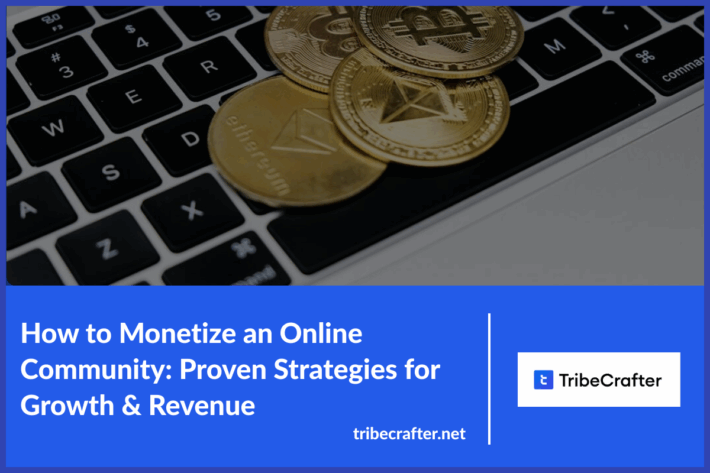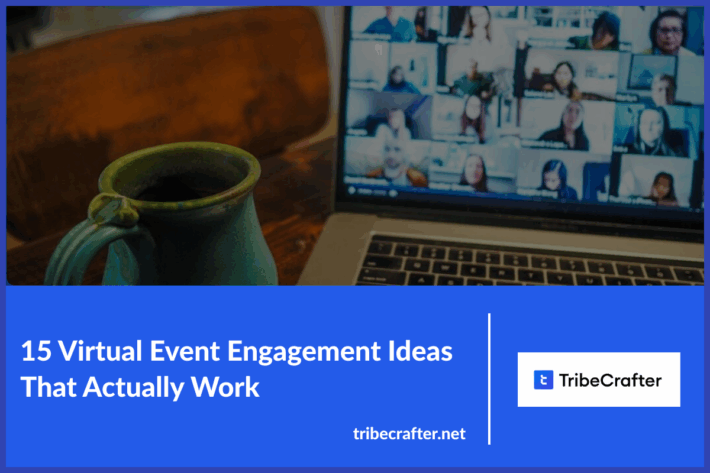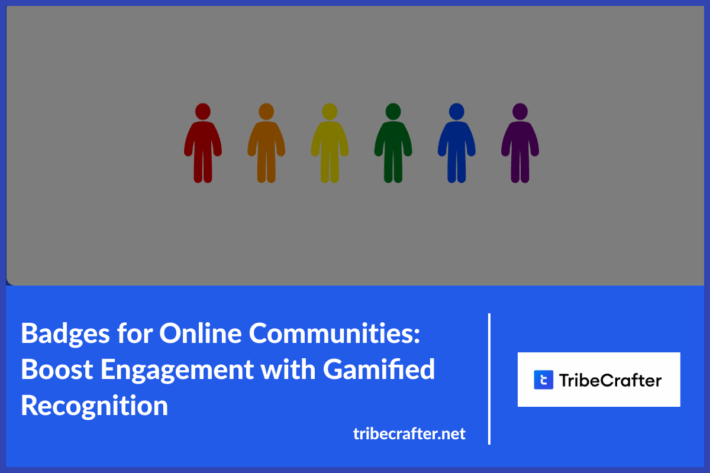How to Use Gamification to Increase Community Engagement and Retention
You have created an online community for your brand, added the members and are now good to go.
But wait, how are you going to keep the members engaged in the community? This is where community gamification comes into action.
Gamification has been widely adopted across various sectors—from education and workplaces to online communities—as a powerful tool to boost motivation and drive member engagement.
Keep reading to learn more about gamification strategies for your online community and their importance.
Table of Contents
What is Gamification?
Gamification is a popular tactic that applies game-design aspects and ideas in non-game environments, such as education, marketing, and online communities to encourage and reward desired behavior and achieve goals.
Features like leaderboards, challenges, awards, badges, points, and many more can be used to do this. Intrinsic motivations such as competitiveness, accomplishment, and teamwork are tapped upon through gamification.
Using the psychological elements of gaming-related human behavior is the aim of gamification. By leveraging our innate desire for ambition, competitiveness, incentives and a sense of achievement, it creates an engaging and stimulating atmosphere that encourages people to get involved.
Gamification has been used to improve user engagement, learning, and performance in a variety of industries, including marketing, business, education, and health.
Core elements of Gamification
Most of the online communities utilize a similar set of gamification elements. Badges and trust scores are the most prevalent instances of gamification in a community context that date back to the early days of internet forums.
These are really easy to put into practice and yield very good results.
Let’s discuss the core elements of gamification that you can conveniently adopt in the gamification strategy of your online community:
1. Badges
Badges are visual elements to represent members’ successes and participation. You can acknowledge and honor members’ efforts by giving them badges for tasks like sharing material, responding to inquiries, volunteering, or attending events. This will promote a feeling of pride and prestige among the community.
Since badges are given out when a person makes a noteworthy contribution to the community, users strive to earn them, making them aspirational.
2. Points
A fundamental component of gamification, points are usually awarded for particular behaviors or actions that support group objectives. By highlighting constructive contributions, this strategy encourages people to participate while also reducing misconduct.
3. Leaderboards
Leaderboards display the points of top members or active contributors of the community. Real-time updates to the leaderboards provide participants insight into their performance.
Members have a clear standard to strive for as they try to secure a desired place on the leaderboard due to the point totals displayed next to each leader’s name.
4. Ranks
When users in a community accomplish particular activity milestones, they are given ranks or titles. For instance, new members may begin with a title such as “New Member”.
Assigning ranks that correspond with their brand identity is beneficial for the majority of communities. You may make your system seem intriguing and pertinent to your members by tailoring titles to the distinct tone and culture of your group.
5. Challenges
In order to successfully use challenges in community gamification, begin with straightforward, pertinent goals and incentives. After taking user preferences and community goals into account, progressively increase the complexity of the challenges. To keep users interested, make sure there is fairness, openness, and a satisfying user experience.
You can also create community-specific challenges like “Post 5 helpful replies this week” or “Invite 3 friends to join.” These time-bound goals create urgency.
6. Streaks and Habits
Reward users for consistent logins or actions with streak counters and bonus points. This builds habit loops that increase daily activity.
Benefits of Gamifying Your Community
Gamification is a powerful strategy for community engagement. By using gamification strategies like leaderboards, points, and badges, gamification promotes healthy competition, active engagement, and an improved user experience.
Gamification has the potential to greatly improve user retention rates and the general community atmosphere by rewarding high-quality contributions. It can even promote social interaction and learning in educational groups. Gamification’s quantifiable characteristics make it simple to monitor and evaluate user behavior and engagement.
Some of the key benefits of community gamification are as follows:
Improved user engagement and retention
Leaderboards, points and ranks are examples of gamification elements that encourage community members to participate actively, which raises engagement levels overall. Members are more willing to engage and contribute when community interaction is made into a game, creating a more lively and dynamic community.
Implementing gamification strategies has been shown to increase user engagement by up to 48%.
Enhanced user experience and satisfaction
Gamification greatly enhances the overall user experience by making the community more entertaining and engaging. This leads to increased loyalty, satisfaction, and ultimately, a higher user retention rate.
By adding gamification elements, the community can become more enjoyable and less like a chore, which can encourage users to return.
Implementing Gamification in Your Online Community
The foundation of gamification is the development of an incentive system that pays users for doing desired tasks. You’re developing features that appeal to the social elements of gaming, such as achievement, teamwork, and competition. The goals and characteristics of your target audience and online community will influence the gamification components you employ.
Gamifying your online community seems fun but you should create a coherent system that does not confuse the members and must align with your community goals and objectives.
Here are the key points you should consider while designing the gamification strategy for your online community:
1. Assess your community’s needs and goals
It’s important to match the objectives of your community with gamification before putting it into practice. Clearly state your goals for gamification and how they relate to your community’s overarching goals. Consider using leaderboards or badges to identify and incentivize individuals who provide insightful contributions, for instance, if your objective is to promote knowledge exchange
2. Choose appropriate gamification elements
For instance, in a fitness community, challenges like step count leaderboards, workout streak badges, or milestone rewards can motivate members to stay active and consistent, while also encouraging a sense of friendly competition and accountability.
3. Select the right platform
Your gamification strategy is only as effective as the platform that supports it. To implement features like badges, leaderboards, points, and progress tracking, you need a community platform that’s both flexible and powerful.
This is where TribeCrafter (TC) stands out. TC is designed with modern engagement needs in mind, offering built-in gamification tools and high customizability—so you can align every element with your community’s unique goals. Whether you’re encouraging contributions, rewarding milestones, or building healthy competition, TC gives you the control and scalability to make gamification work for you from day one.
4. Evolve your gamification strategy
A great gamification strategy is never one-size-fits-all—and it shouldn’t stay static. As your community evolves, so should your approach. What works for a small, tight-knit group may not scale for a larger, more diverse member base.
Start simple, then build on your system based on engagement trends, feedback, and changing goals. Continuously refining your gamification elements ensures they stay relevant, motivating, and aligned with your community’s journey.
Real-World Examples of Successful Community Gamification
In order to fully understand the potential of gamification, one should look for real-word examples of successful communities that have employed gamification and yielded desired results.
1. Facebook Groups
One such example where gamification has been used successfully is Facebook groups.
In order to increase user engagements, Facebook groups have introduced gamification elements such as Group Badges and Community Awards.
With the help these badges and awards, group administrators may readily identify contributions and accomplishments within the community, recognize outstanding comments within their groups, and even pinpoint remarkable content
2. Duolingo
Users of the famous language-learning app Duolingo return time and time again to increase their “streak,” or the number of days in a row that they have finished a course. A flame icon is used to symbolize streaks, and the flame is extinguished if the user doesn’t meet their streak.
Users are enticed to check the app every day by this unique gamification feature.
3. LinkedIn
LinkedIn encourages users to finish their profile pages by displaying a progress bar and text such as “Profile Strength: Intermediate.” Along with a message telling users that they will be a “All Star” and get more profile views if they complete their profiles completely, the website also features a trophy icon.
4. Nike+ Run Club
Athletes may track their progress, earn badges and prizes, and share victories with Nike’s online community, named as Nike+ Run Club.
Users become more dependent on and devoted to the app that motivates them and monitors their development as a result of their progress and social support.
Gamification isn’t about turning your community into a game. It’s about using smart, subtle design to guide behaviors that benefit both your members and your brand.
Start with one or two mechanics, monitor how your users respond, and iterate from there. If done right, gamification can turn a passive audience into an engaged, thriving tribe.



